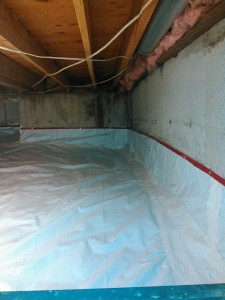 If you think your home is mold-free, you’re probably wrong.
If you think your home is mold-free, you’re probably wrong.
As a fungus, mold is in soil and spreads to new locations by releasing spores into the air. It can travel through an open window or follow you inside through the front door.
People’s reactions to mold vary depending on individual predispositions to mold and the type of mold growth, from no symptoms to sore throat and itchy eyes, heightened asthma problems, skin rashes and in some cases autoimmune disease from prolonged exposure. Because medical issues can vary so greatly, it doesn’t matter which type of mold may be growing or how you’re feeling, all visible mold growth in your home should be removed and the source of moisture repaired to ensure growth does not occur again.
What’s causing the mold to grow? It could be a leaky pipe, humid basement or a hurricane that flooded your entire first floor.
Mold growth in a basement, attic or crawl space is relatively common because residents don’t see these areas often, and they can be very humid.

Recent Comments